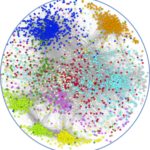Link to Pubmed [PMID] – 27577684
Sci Rep 2016 08;6:32252
The biological impact of alternative splicing is poorly understood in fungi, although recent studies have shown that these microorganisms are usually intron-rich. In this study, we re-annotated the genome of C. neoformans var. neoformans using RNA-Seq data. Comparison with C. neoformans var. grubii revealed that more than 99% of ORF-introns are in the same exact position in the two varieties whereas UTR-introns are much less evolutionary conserved. We also confirmed that alternative splicing is very common in C. neoformans, affecting nearly all expressed genes. We also observed specific regulation of alternative splicing by environmental cues in this yeast. However, alternative splicing does not appear to be an efficient method to diversify the C. neoformans proteome. Instead, our data suggest the existence of an intron retention-dependent mechanism of gene expression regulation that is not dependent on NMD. This regulatory process represents an additional layer of gene expression regulation in fungi and provides a mechanism to tune gene expression levels in response to any environmental modification.




